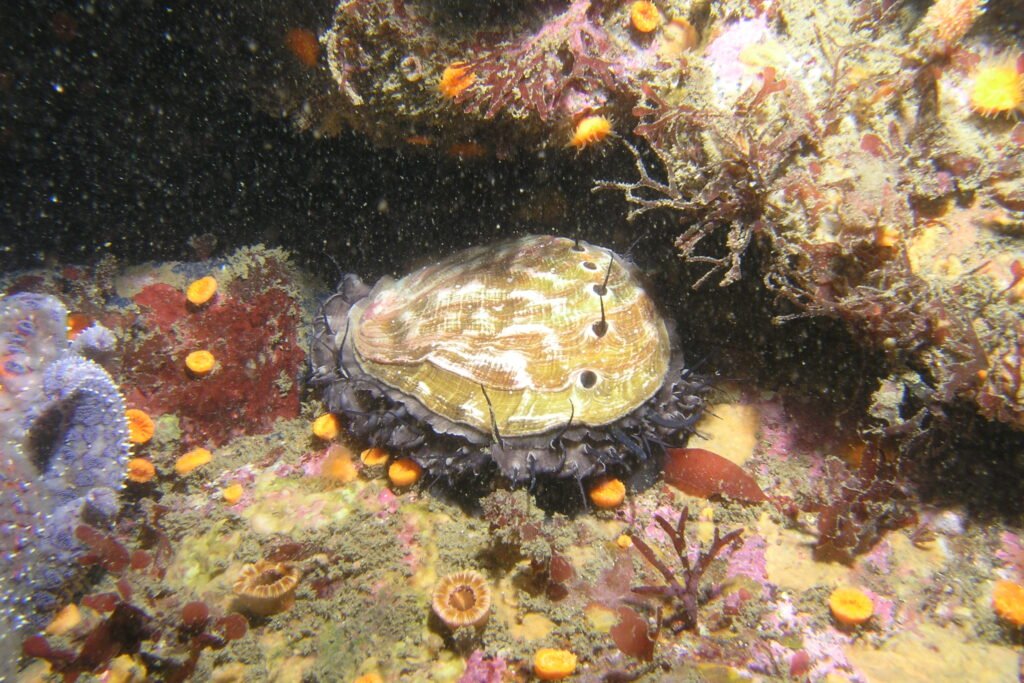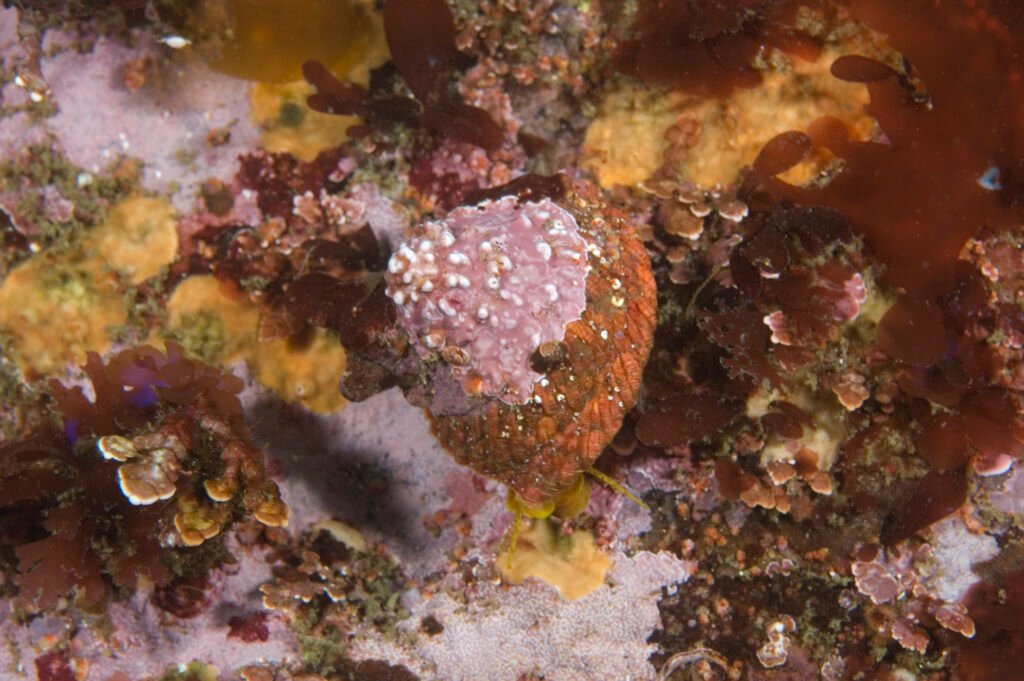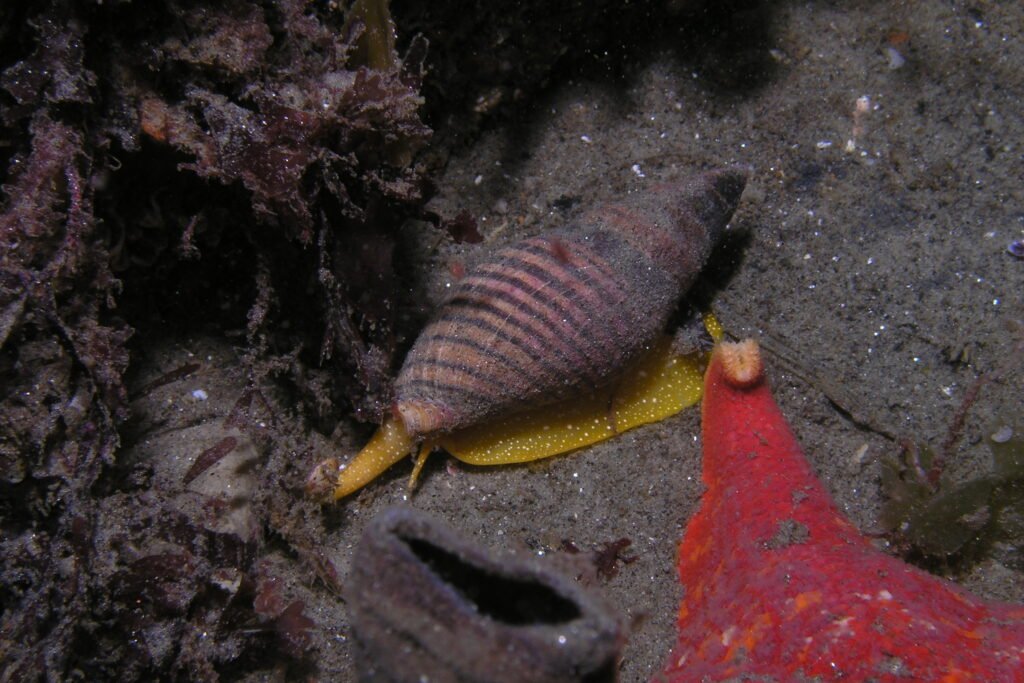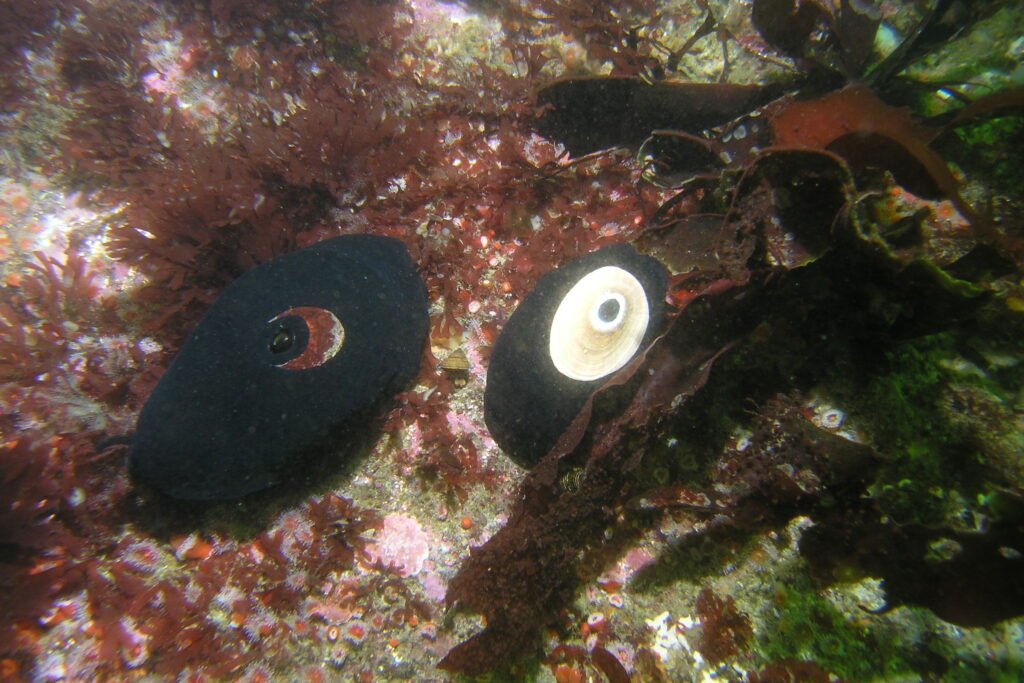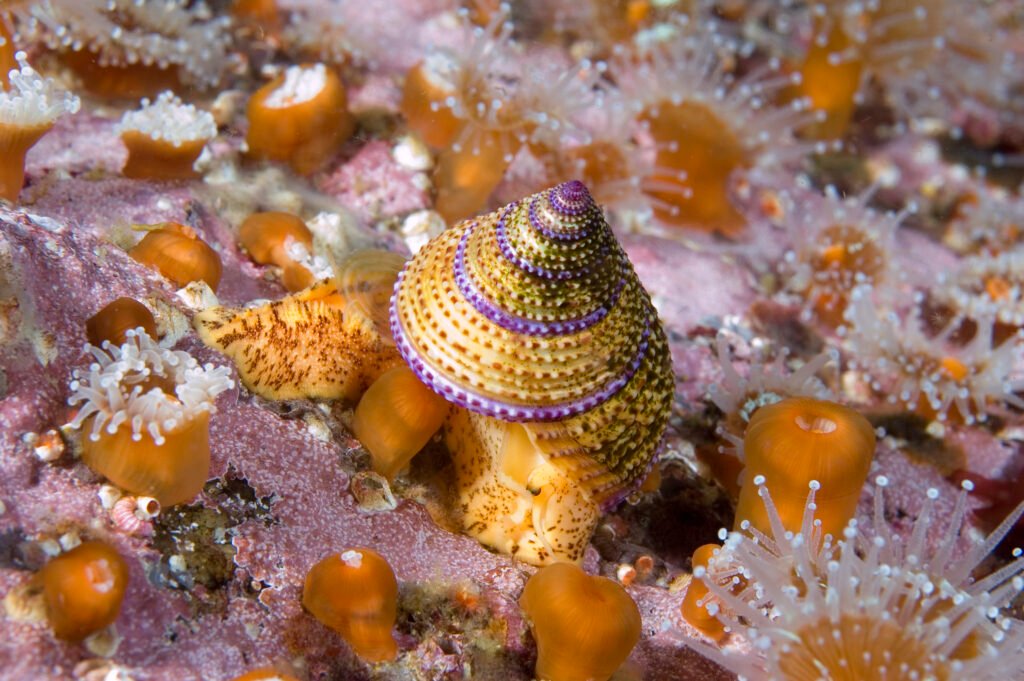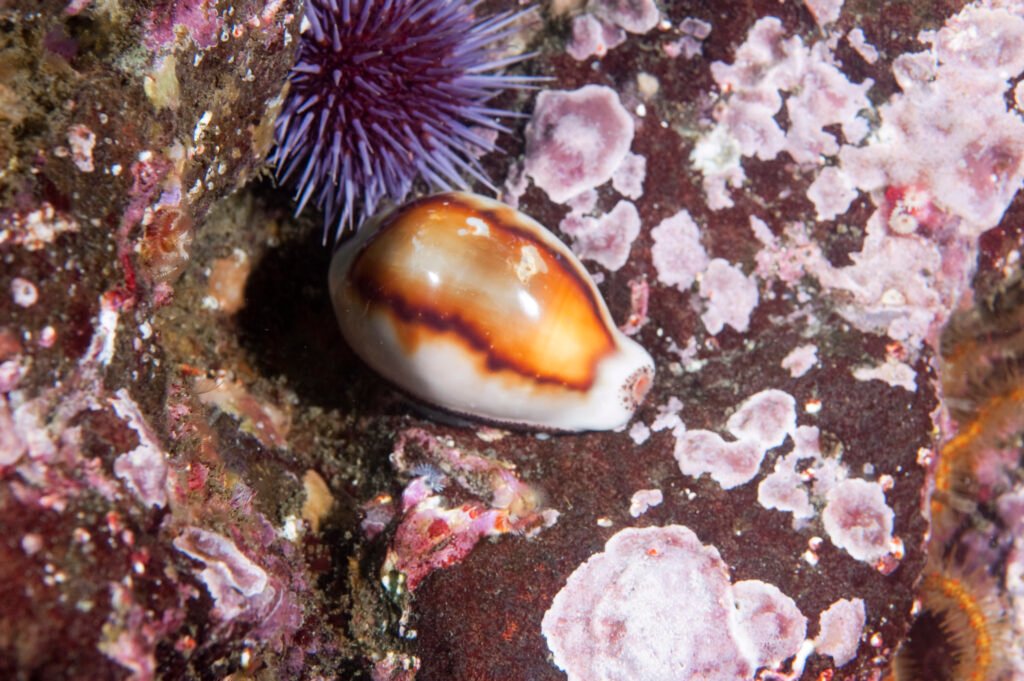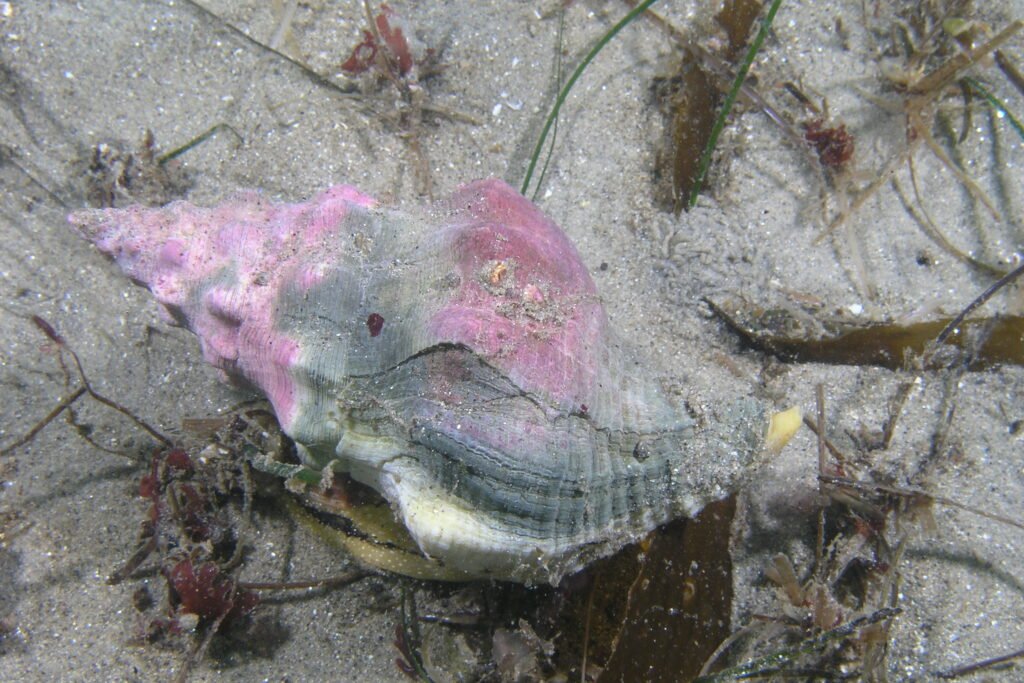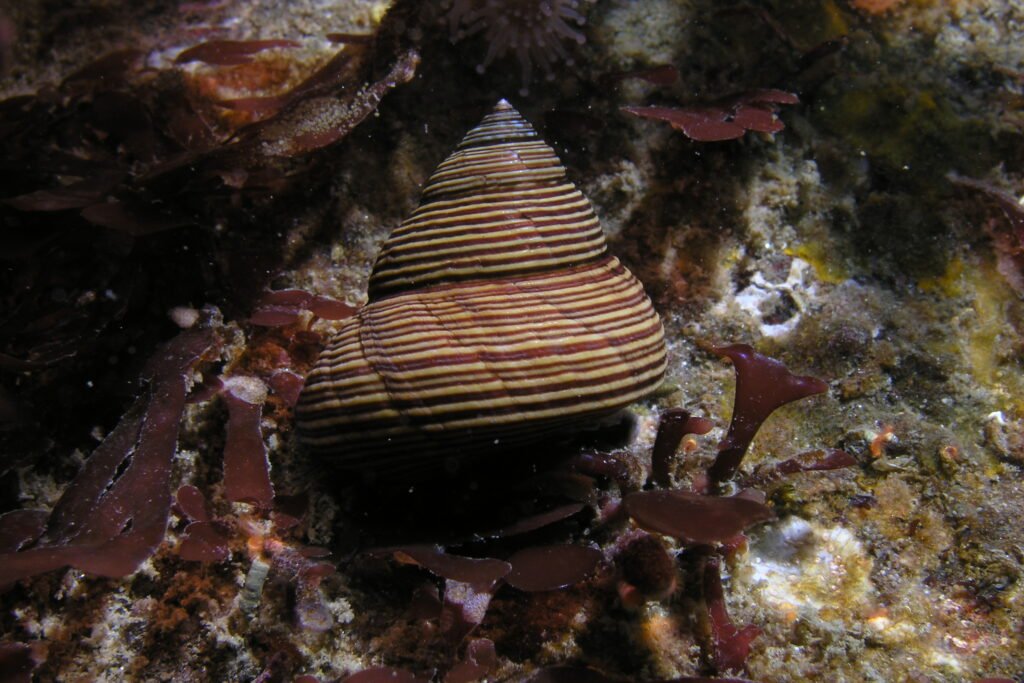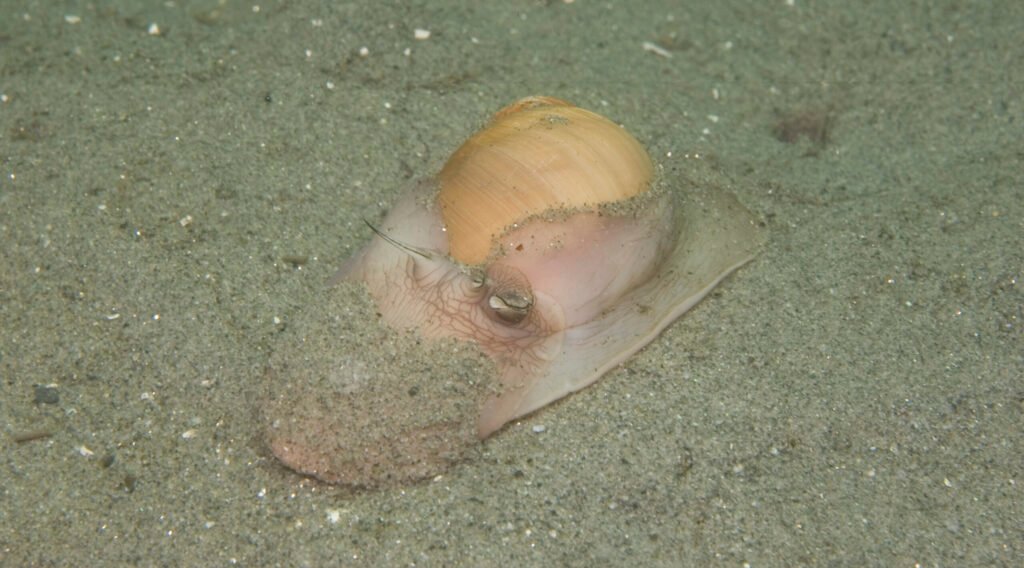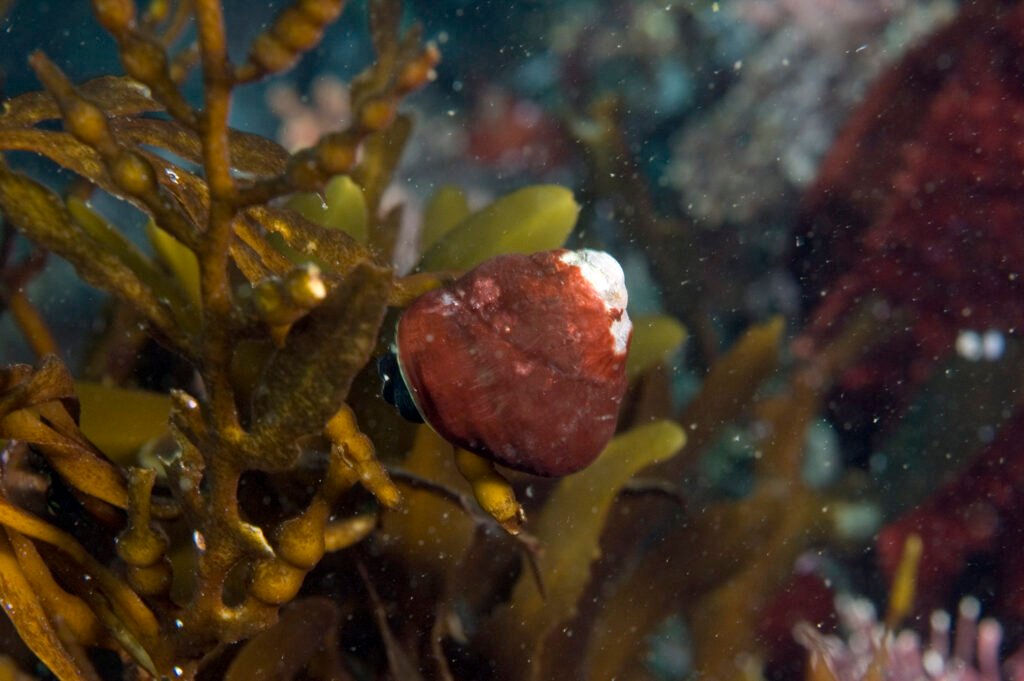Physical Description
Abalone are marine mollusks characterized by their ear-shaped shells, which are thick, flattened, and have a series of respiratory pores along one edge. The shell’s exterior is typically covered in algae and encrusting organisms, while the interior is smooth and lined with iridescent nacre, or mother-of-pearl. Adult abalones vary in size, with some species reaching up to 12 inches in length. Their coloration ranges from reddish-brown to greenish and blue, often with a mottled or speckled pattern.
Habitat
Abalones inhabit rocky coastal environments where they can adhere to surfaces with their strong muscular foot. They are found in intertidal zones and subtidal regions, often hiding in crevices or under rocks to avoid predators. These mollusks prefer areas with strong water movement, which helps provide a steady supply of oxygen and food.
Geographical Range
Abalone species found along the eastern Pacific coast are distributed from Southern Alaska down to Baja California, Mexico. Specific species, such as the red abalone, are predominantly found along the coast of California, from San Francisco Bay to the Channel Islands.
Diet
Abalones are herbivorous and primarily feed on various types of algae. Their diet includes macroalgae such as kelp and other marine plants. They use their radula, a specialized toothed structure, to scrape algae off rocks and other surfaces.
